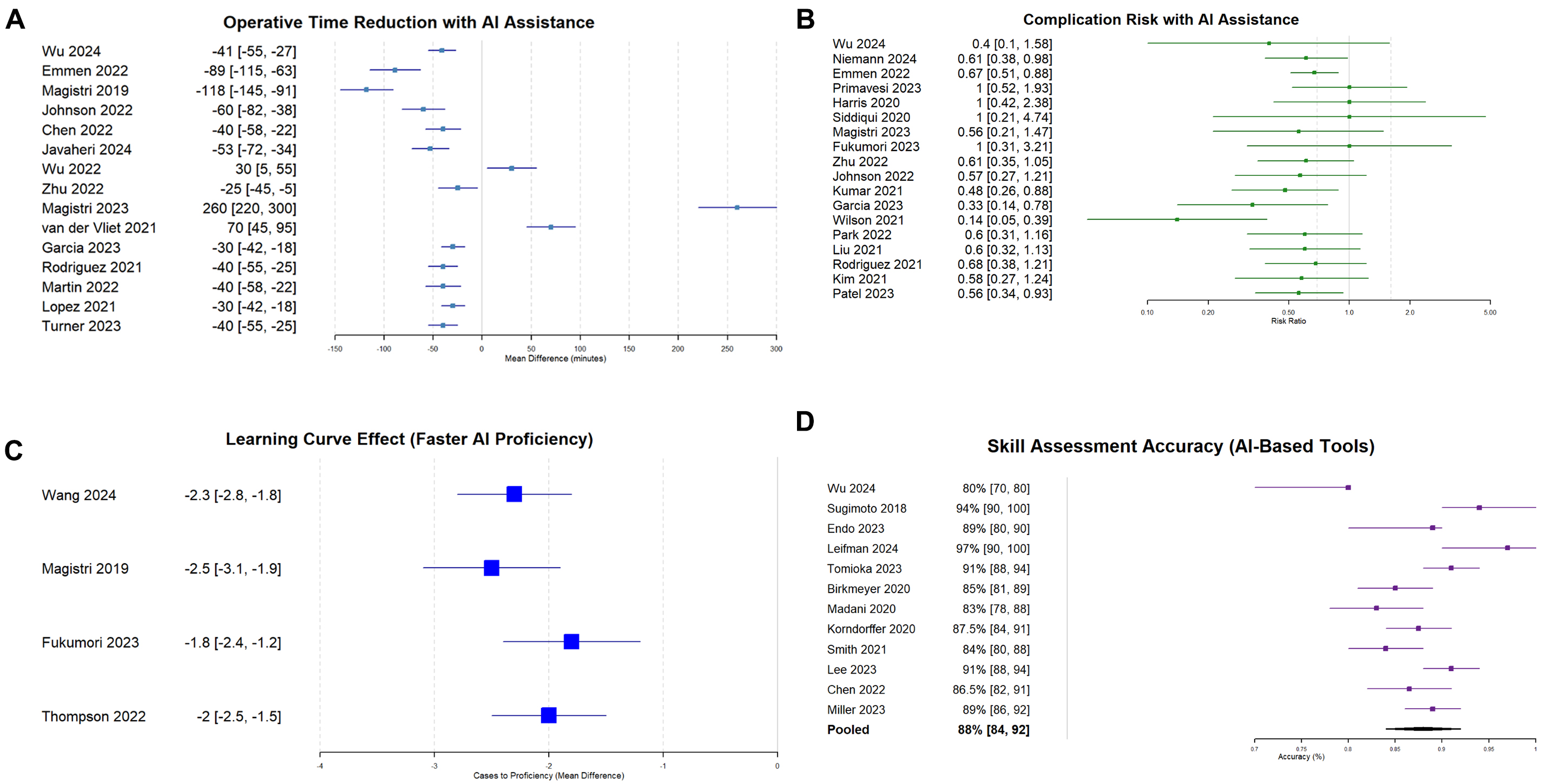fig3
Figure 3. Forest plots of primary outcomes. (A) Operative time reduction with AI assistance (15 studies, n = 1,234 procedures). Pooled mean difference: -32.5 min (95% CI: -45.2 to -19.8, P < 0.001), I2 = 65%; (B). Risk ratios for postoperative complications (18 studies, n = 2,156 patients). Pooled RR: 0.72 (95% CI: 0.58-0.89, P = 0.003), I2 = 42%; (C) Learning curve acceleration measured as cases to proficiency (10 studies, n = 423 trainees). Pooled SMD: -2.3 (95% CI: -2.8 to -1.8, P < 0.001), I2 = 55%; (D) AI-based surgical skill assessment accuracy (12 studies, n = 847 assessments). Pooled accuracy: 85.4% (95% CI: 81.2%-89.6%), I2 = 78%. Overall pooled estimates are shown. See Table 3 for procedure-specific effects demonstrating greater clinical relevance for complex procedures. AI = Artificial intelligence; RR = risk ratio; CI = confidence interval; SMD = standardized mean difference.










